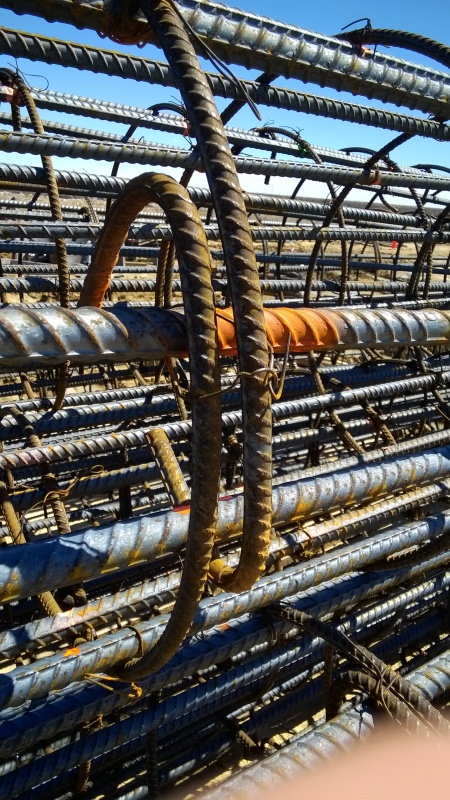wijgeng
Structural
- Dec 23, 2014
- 27
thread507-353992
Hi, as discussed in the referenced thread above, ACI 318-11 specifies that circular ties in a compression member shall over lap by at least 6" and terminate in a standard hook that engages a longitudinal bar. My question is, what is considered "engaging" a longitudinal bar.
If there is a longitudinal bar inside of the hooks, does that one bar engage both hooks (i.e. There would be a 3" gap between the hooks and the longitudinal bar)?
What distance is acceptable between the longitudinal bar and the hook to be considered engaged? My thought would be that the longitudinal bar would need to he snug and secured in the corner of the hook. The reason being that there will be a stress concentration on the inner radius of the hook. Because steel has a much much higher strength than concrete (i.e. 60 ksi vs 4 ksi) the concrete would crush before the longitudinal bar can be engaged. Is this correct? Is this practical for construction or is it just ideal?
Thank you!
Hi, as discussed in the referenced thread above, ACI 318-11 specifies that circular ties in a compression member shall over lap by at least 6" and terminate in a standard hook that engages a longitudinal bar. My question is, what is considered "engaging" a longitudinal bar.
If there is a longitudinal bar inside of the hooks, does that one bar engage both hooks (i.e. There would be a 3" gap between the hooks and the longitudinal bar)?
What distance is acceptable between the longitudinal bar and the hook to be considered engaged? My thought would be that the longitudinal bar would need to he snug and secured in the corner of the hook. The reason being that there will be a stress concentration on the inner radius of the hook. Because steel has a much much higher strength than concrete (i.e. 60 ksi vs 4 ksi) the concrete would crush before the longitudinal bar can be engaged. Is this correct? Is this practical for construction or is it just ideal?
Thank you!

